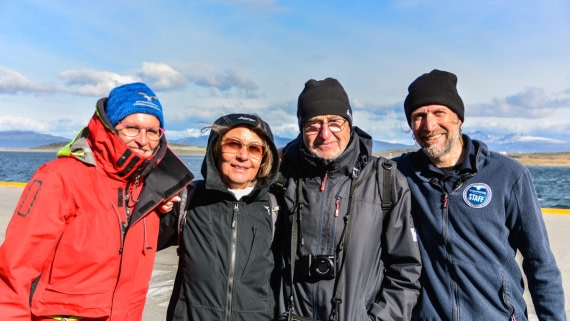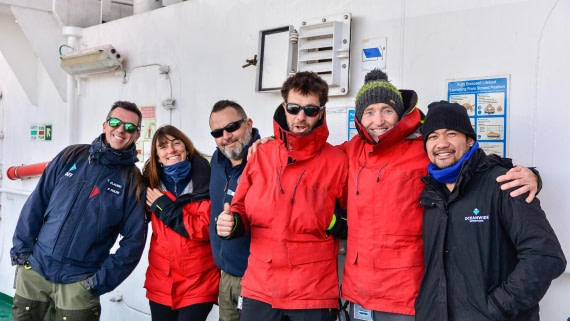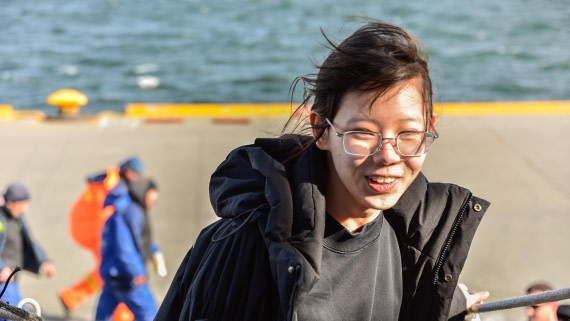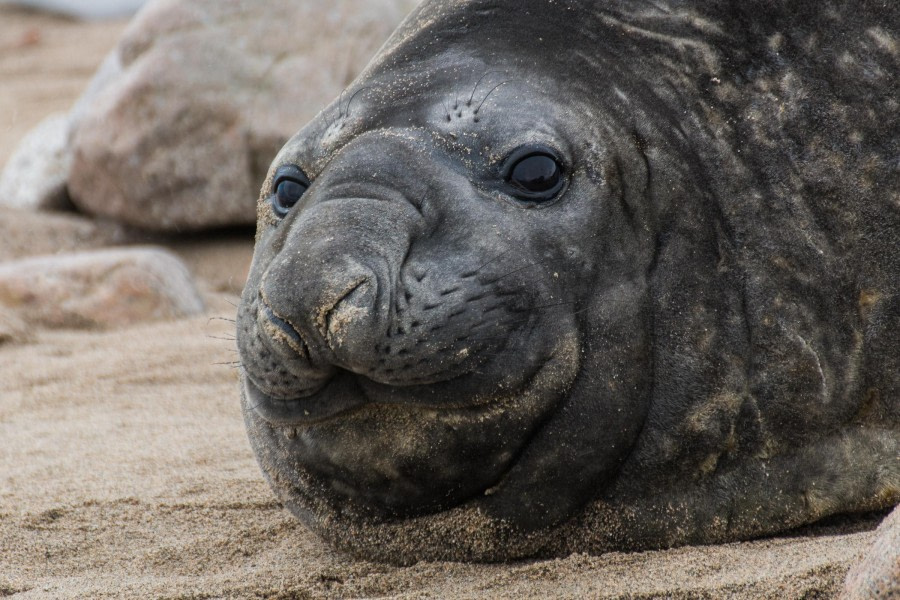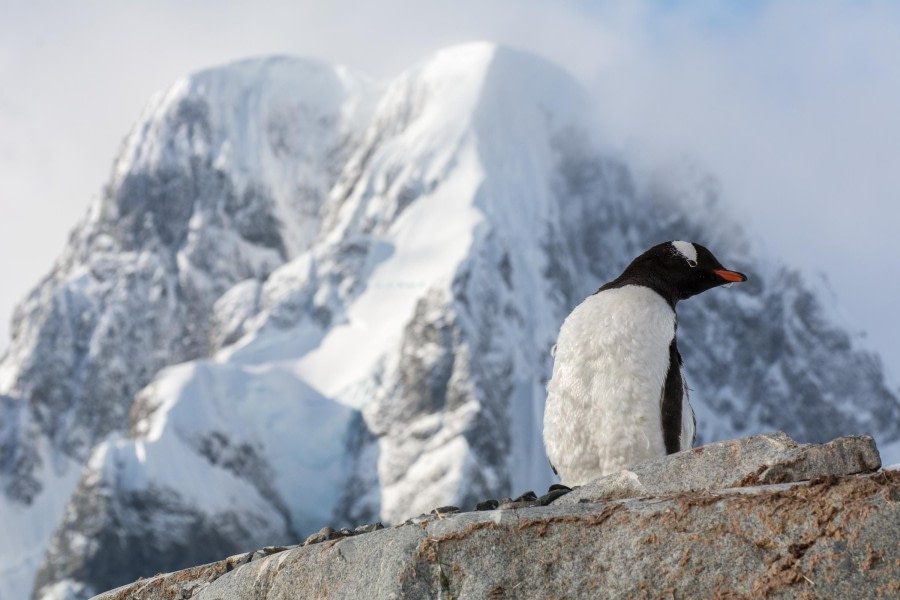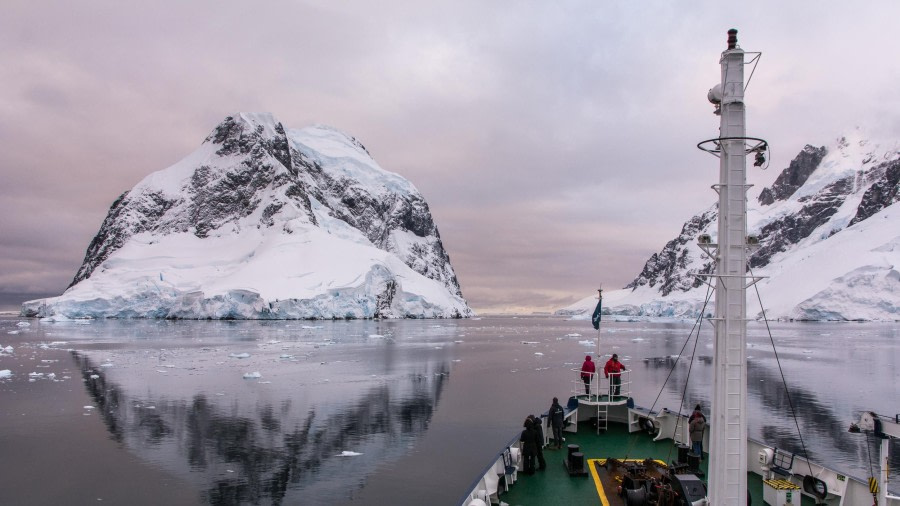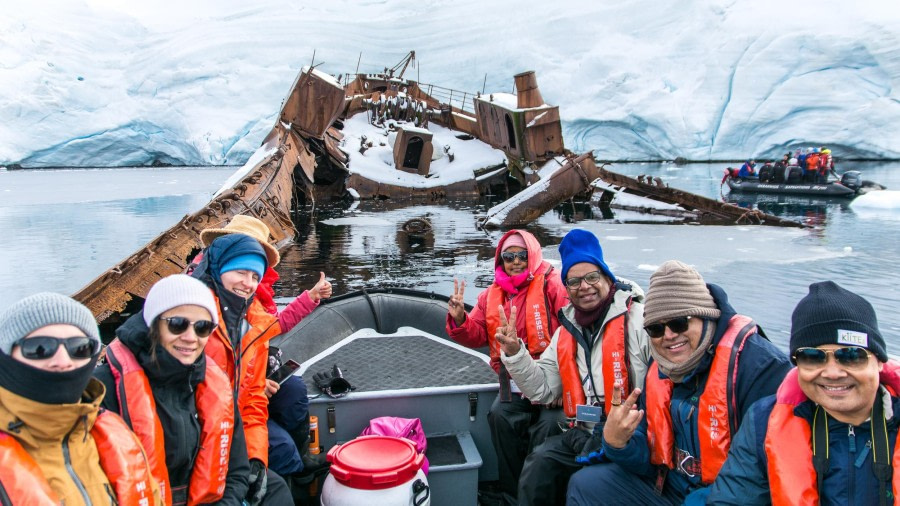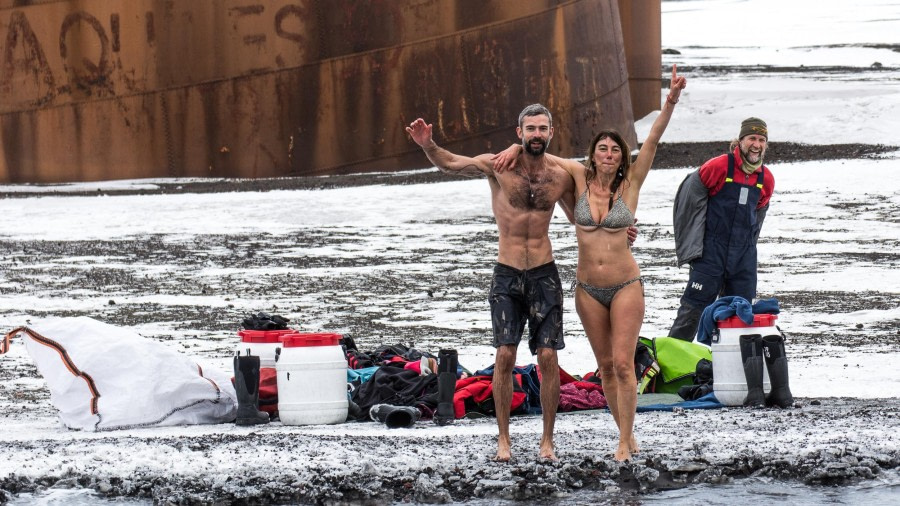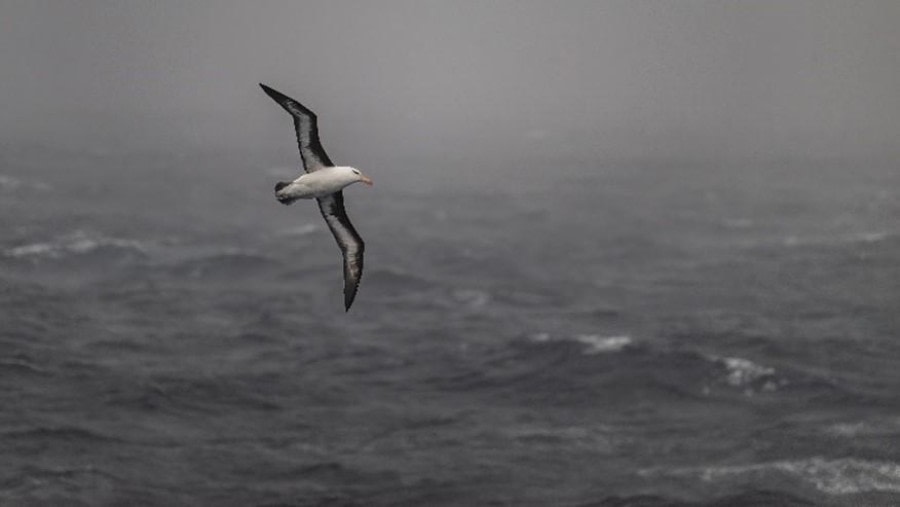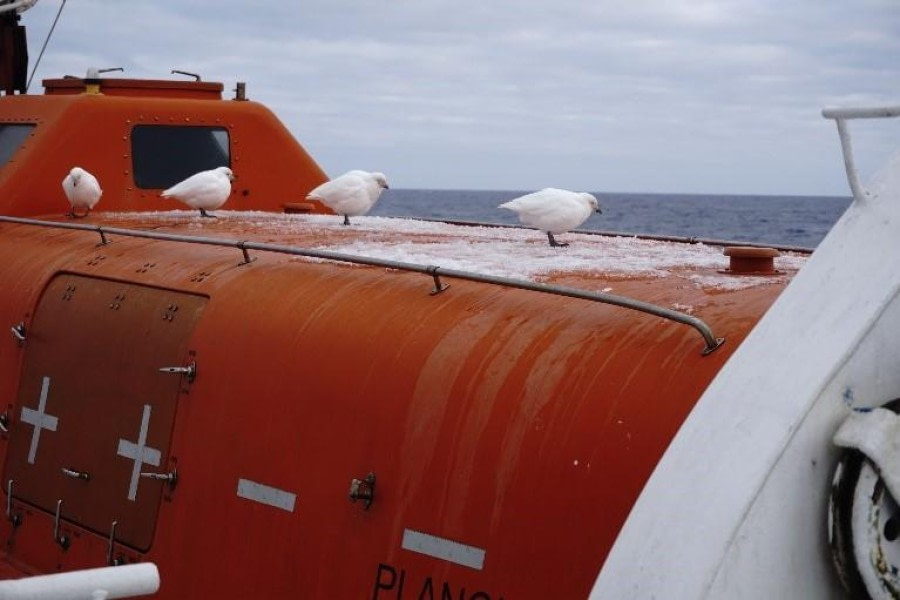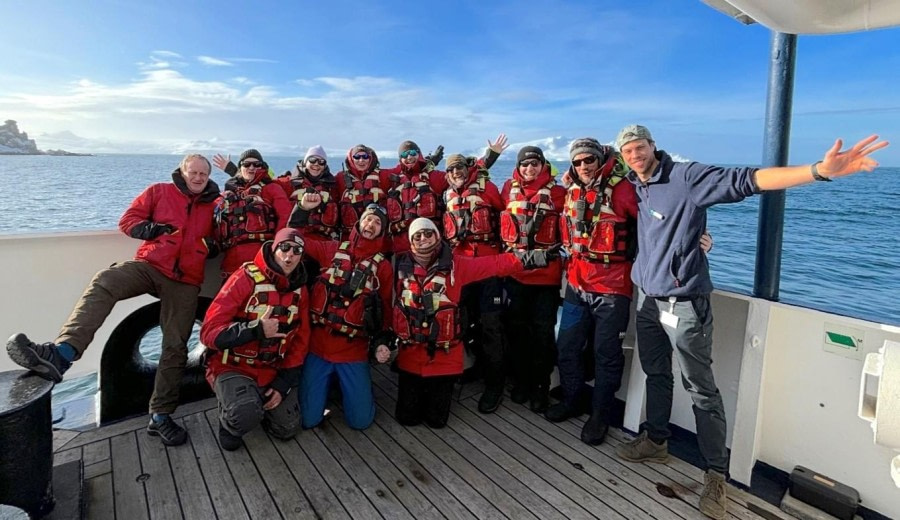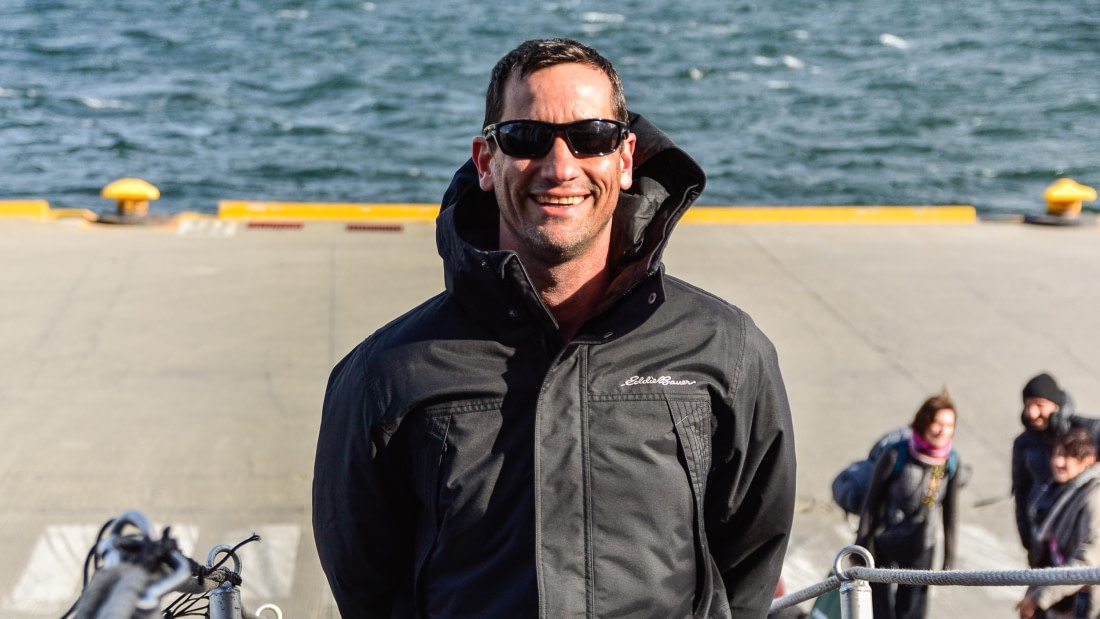| Datum: | 21.03.2024 |
| Position: | 54° 55.6’S / 67° 25.4’W |
| Wind: | SW-6 |
| Wetter: | Partly Cloudy |
| Lufttemperatur: | +8 |
It was a windy autumn day in Ushuaia with some sunshine, and cold temperatures. Last time to do some outdoor gear shopping and a last cup of coffee on solid grounds.
At 4 P.M. we were welcome to board our gracious ship M/V Plancius. She was the only blue vessel in port today, but the coolest. The expedition team gave us a warm welcome and so did the entire hotel team. Assistant Hotel Manager Alfredo checked us in and we were guided to our cabins by the friendly members of the crew.
At 5:15 P.M. our expedition leader Claudio welcomed us in the lounge where he gave us more information about the mandatory safety drill and abandon ship procedure. After being shown a safety video, the second officer Martin provided us with more information before starting the drill. When the alarm signals had sounded, we made our way back to the lounge together with our large life jackets. We put on our life jackets and then awaited further instructions. Then the abandon ship command was given, and we all made our way to the deck where the life boats are located.
The 2nd officer gave us more information about the life boat procedure and after that there was time to have a look inside one of the life boats. Not very comfortable or spacious, but of course necessary in case of emergency.
And then the moment was there; the mooring lines were pulled in and we were leaving Ushuaia Port. Our expedition had officially started! We enjoyed the wind in our faces and stunning landscapes from the outer decks while Ushuaia slowly became smaller and smaller.
At 6:30 P.M. we were invited to join the expedition team and the captain in the lounge for a toast with some delicious prosecco and tasty snacks. We received more information about how things work on the ship and how the expedition is planned. During the expedition we depended a lot on the weather conditions and Claudio explained that we often have multiple plans in case our Plan A cannot be done. That sounds like a proper expedition which excited us even more!
After a long day it was time to have dinner. Today chef Ivan and his team prepared a delicious buffet menu. We met our fellow passengers in the dining room which was buzzing with chatter and laughter. A perfect way to start the expedition.
The first few hours of the evening the ship was still very stable, but around midnight we started to sail into the Drake and it started rolling. Good night!


